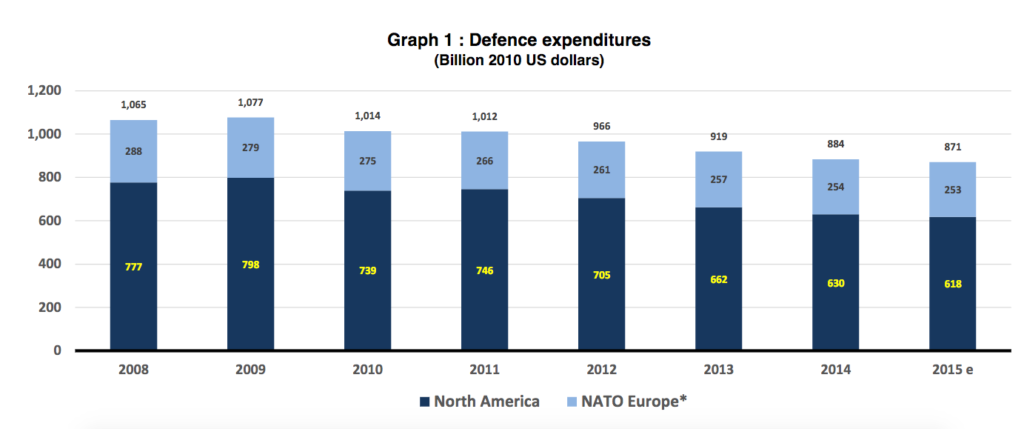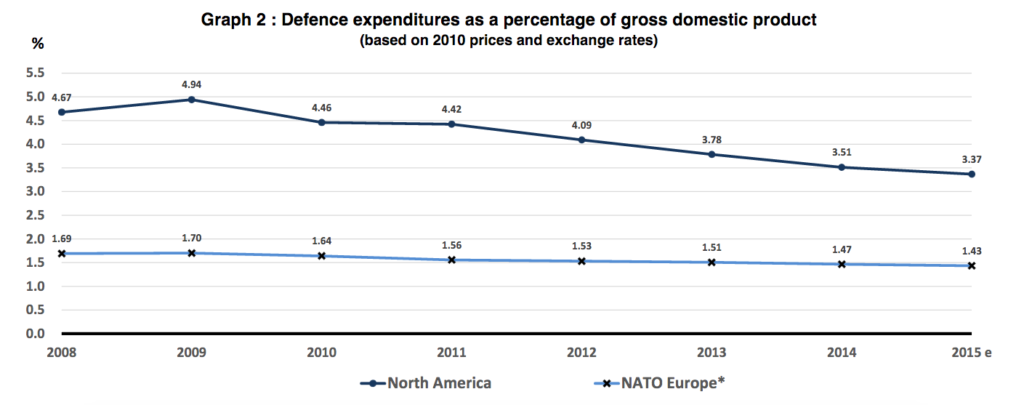
NATO chief Jens Stoltenberg Delivery delivery speech in NATO’s Warsaw Summit. (John Thys, AFP)
“This is a defining moment for our security. The world is a more dangerous place than just a few years ago, and NATO is responding with speed and with determination.” (Joint Press Point, Jens Stoltenberg & Andrzej Duda)
The Warsaw NATO Summit concluded last weekend were set to be a landmark meeting for the alliance, with U.S. President Barack Obama, U.K. Prime Minister David Cameron, and Germany Chancellor Angela Merkel all presented in the summit.
As a security alliance, NATO’s policy agenda remains the same over the years: collective defense, crisis management, and cooperative security, for all its individual members and for Europe as a whole.
The Wales Summit Declaration in September 2014 followed this agenda and addressed two major concerns for NATO: the aggressive behaviors on NATO’s eastern peripheries posed from Russia, and the security challenges emerged from its Southern neighbors of the Middle East and North Africa (MENA). Two years later in Warsaw, NATO members still shared the recognition of the same transatlantic threats two years later in Warsaw.
What the NATO leaders chose to ignore is the shared burden of collective defense. NATO members, depending on their geographical location, have a difference sense of emergency with these recognized security threats. Russia’s continuous aggressive westward expansion has risen anxiety for countries in Eastern Europe, namely Poland and the Balkan states (Estonia, Latvia, Lithuania).
The annexation of Crimea and Russia’s proactive military activities, all indicated Putin’s willingness of using forces to achieve his political agendas. These activities pose fundamental threats to the stability of the East peripheries. Not surprisingly, Poland and the Baltic members are among the countries demanding an increase military presence on the eastern front to deter Russia’s actions.
Germany, on the other hand, prefers NATO to deter Russia through dialogues and negotiations rather than flexing its military muscles. A month earlier, German Foreign Minister Frank-Walker Steinmeier criticized the 10-day military training exercise in Poland as “loud saber-rattling and shrill war-cries” that would only escalate the already tension in the region.
“Militarily, this summit will be about strengthening forces along the eastern front. Politically, it’s a Brexit summit.” said Michal Baranowski, Director of the Warsaw Office of the German Marshall Fund.
The United Kingdom will need to adjust its role after Brexit domestically, within NATO, and with EU. Even though U.K. committed on the role of nuclear deterrence, and agreed to take the lead (together with Germany, Canada, and the U.S.) in the rotational battalion in Poland and the three Balkan members, this defense agenda might be distracted by the incoming election and its economic obstacles after Brexit.
Divided policy priorities lead to commitment problems in this collective defense alliance.

NATO defense expenditure (in USD) 2010-2015

NATO defense expenditure (as percentage of GDP) 2010-2015
NATO’s total defense expenditure increased this year for the first time since 2009. Yet, the majority of the contribution depended on a few members. A clear division line on expenditures was drawn between Poland, Estonia, Latvia, Lithuania, and the rest of the Alliance members.
Defense budget of the former four countries had a more than 40% increase in the past few years. On the other hand, defense budget dropped more than 4% in France, more than 5% in Germany, more than 6% in U.K., and more than a third in Italy. Collectively, only five out of 28 Allie members’ NATO defense spending meet the minimum 2% of the GDP spending guideline; 10 members meet the minimum 20% of the national defense budget guideline. Defense expenditures by U.S. alone constitute more than 70% of NATO’s since 2008.
In contrast, Russia’s military expenditures doubled in the past decade.
To make NATO’s deterrence strategy and collective defense effective, the allies must demonstrate that their forces in Europe represent a unified coalition with common goals and shared burdens. After years of shrinking resources, deterring adversaries and assure peace in the transatlantic region will require more pronounce commitment from all of its members.
To read more on this topic:
Warsaw Summit Communique. North Atlantic Treaty Organization. (July 9, 2016)
Jens Stoltenberg, Doorstep Statement by NATO Secretary General Jens Stoltenberg at the Start of the NATO Summit in Warsaw. North Atlantic Treaty Organization. (July 8, 2016)
NATO’s Next Act. Foreign Affairs. (July/Aug. Issue, 2016)
Stephen Sestanovich, The Warsaw Summit: NATO Examines Itself, Again. Council on Foreign Relations. (June 30, 2016)